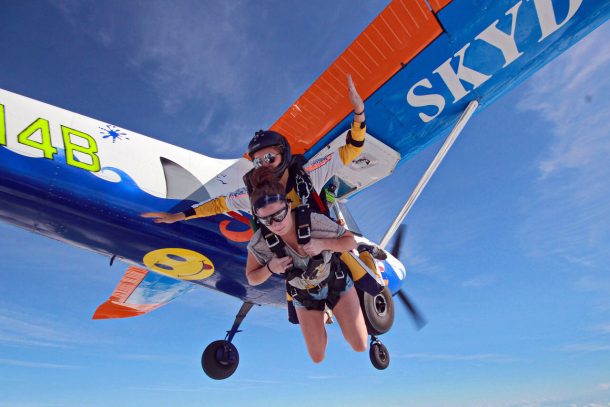The Physics Of Skydiving
Skydiving Information
Posted by: SCC ADMIN
11 years ago

Did You Know: When Skydiving, You Don’t Feel Like You’re Falling
When Felix Baumgartner exited the capsule from the edge of space with the Red Bull Stratos project, he became supersonic because of the thinness of the air at such a high altitude. Simply put, because of the lack of air molecules, there was little resistance on Felix’s body which allowed him to reach the dangerous speed of 846mph – faster than the speed of sound!
As Felix descended closer to earth, the density of the air increased which slowed the speed of his fall.
So how do the physics of skydiving and terminal velocity work? When making a skydive, we fall at 120mph and descend at a rate of approximately 1,000 feet every six seconds. Despite this high-speed descent, skydivers don’t feel like they’re actually falling. The reason for this is terminal velocity. At approximately 120mph, skydivers reach terminal velocity and ride air molecules that feel as stable as laying on a bed. Rather than a feeling of uncontrollable falling, a person feels more like they are floating.
The official definition of terminal velocity is:
ter·mi·nal ve·loc·i·ty noun PHYSICS noun: terminal velocity; plural noun: terminal velocities
- the constant speed that a freely falling object eventually reaches when the resistance of the medium through which it is falling prevents further acceleration.





